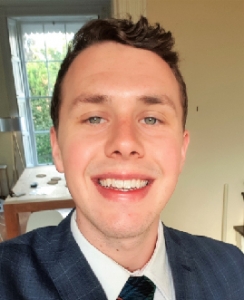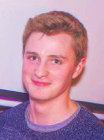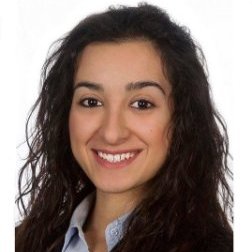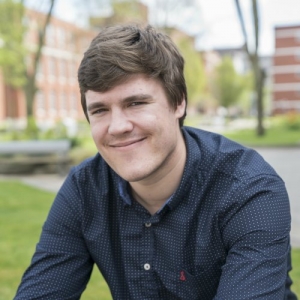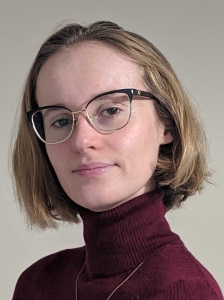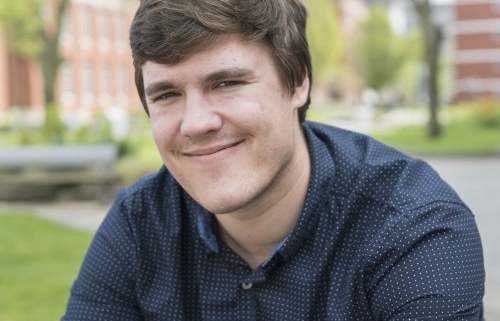
The Institute of Materials, Minerals and Mining (IOM3) invites all Knowledge Quarter Partners to The Young Persons’ Lecture Competition 2019. The annual gala evening finds a winner among a shortlist of brilliants essays in material sciences, composed, and delivered on the night, by a crop of talented young professionals and students up to the age of 28 from across Britain.
Six finalists will give a 15 minute presentation on a technical topic of their choice and answer questions from a panel of three judges.
The winner will represent the UK at the Young Persons’ World Lecture Competition final in London in October 2019.
Below is a sneak preview of the variety of discussion topics, from implants to paint to lunar rocks. More on the competition, the finalists and a wealth of other resources can be found at IOM3’s dedicated site.
To attend please RSVP to Efi Fragkou.
FINALISTS
Midlands – Matthew Wadge
Can titanates provide an alternative method of improving current implant surfaces?
Despite recent studies showing 70.6% of hip implants can survive for at least 15 years, the remaining percentage accounts for a large number of patients, considering nearly 90,000 hip implants were fitted in 2017 alone. Of these failures, aseptic loosening (implant loosening not due to infection), and infection make up nearly 40%; an alarmingly high number. With current methods of improving implant surfaces resulting in coating spallation due to high temperatures (>1,500C), how can we achieve better adhesion/antibacterial properties, without using such high temperatures?
The presentation will introduce an interesting alternative to the present method of plasma spraying hydroxyapatite, that can not only provide ‘natural’ adhesion between the implant and surrounding tissue, but can also be tailored to have further bioactive (‘bone growing’), or antibacterial properties. Matthew will delve into the world of titanate structures, demonstrating the simplistic methodology to produce them and how to tailor them for specific applications. In addition, novel work into the effectiveness of gallium incorporation into the titanate structures will be presented.
South West – James Grant
Electrophoretic materials: The resurgence of E-link through Frustrated Total Internal Reflection (F-TIR) films
E-link displays utilise electrophoretic materials to achieve their high contrast and low power characteristics. The use of encapsulated nanoparticles, charged by an inverse micelle mechanism, generates the black and white pixels required to form an image. These displays, however, only produce monochromatic images and traits such as inertial scrolling or video are implausible due to the limitations of current electrophoretic material technology.
The presentation explores how Frustrated Internal Reflection (F-TIR) films exploit evanescent wave propagation phenomena at the boundary surface to produce fast switching times in the device and how such F-TIR films can be employed to allow the integration of colour pigments. Research carried out by our team included optimisation of the stability of the electrophoretic material due to counter ion charging, as well as enhancing nanoparticle mobility through laser integrated reflectance spectroscopy.
North East – Federica Rosaria Lisa
Understanding the factors that influence power and graphite electrode consumption at the ladle arc furnaces and how these can be reduced
Over the last three years, British Steel has seen a gradual increase in power input and graphite electrode consumption at the ladle arc furnaces for the manufacture of steel. The aim of this research was to understand the factors that influence high consumption and suggest improved alternatives to create a model in the future. Previous research showed that oxidation and sublimation affect the use of graphite electrodes by 80-85% due to both physical and chemical factors. In this investigation, it was also discovered that both power and electrode consumption were highly dependent on factors such as plant availability, human factors, schedule adherence and logistics. Possible alternatives to reduce power and electrode consumption were identified and suggested. These improvements will help reduce energy use, maintenance and number of graphite electrodes, and improve consistency. In financial terms, this work could give savings of over £1 million annually.
North West – Jack Saunders
Watching paint dry: How to stop corrosion
Corrosion of metallic surfaces is estimated to cost the world around US$2.5 trillion every year (3.4% global GDP). From the DIY-er at home to the CEOs of BP and AkzoNobel, everyone has to deal with the damaging costs and dangerous effects of corrosion. Paints and coatings are used to delay corrosion from eating away at infrastructure, vehicles and homes. A push for the reduction in volatile organic compounds (VOCs) has led to an increase in the use of water-based paints. Water-based paints often comprise 50wt% suspended polymer particles and these particles have an essential role in preventing corrosion.
Excitingly, in the past 30 years, we have a better understanding of how water-based paints dry and are working towards controlling the structure of the dried paints and coatings. As technology advances, we are able to see into the nanoscale and gain a true insight into this important area of science.
South East – Megan McGregor
The world’s hottest superglue: Materials requirements for better sealing in jet engines
Jet engines function using a high-temperature gas stream to do work and generate thrust. In the aviation industry, where fractional increases in efficiency equate to savings of hundreds of thousands of pounds, preventing loss of gas from this stream is crucially important. This requires sealing between the moving turbine blades and the stationary casing of the turbine. Any sealing solution must not only increase sealing efficiency, but must stand up to the ever-increasing temperatures and rotational speeds of turbines, whilst remaining light.
Such niche applications provide opportunities for new intermetallic materials, specially tailored to withstand this challenging environment. This talk will explain current and new sealing systems in the high-pressure turbines of jet engines, and explore the materials requirements for such new systems.
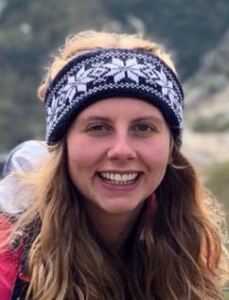 Scotland – Abigail Georgia Robinson
Scotland – Abigail Georgia Robinson
Mysterious moon rocks: Locating the source site of lunar meteorites
Lunar meteorites were first identified on Earth in the early 1980s. Prior to this, the only known samples of lunar rock on earth were those retrieved during the NASA-Apollo and Soviet-Luna missions. Problematically, these mission-retrieved samples were collected from a small source region and represent only ~4% of the moon’s surface. On the other hand, lunar meteorites could originate from any cratered site on the moon’s surface and so provide a much more comprehensive view into lunar mineralogy, chemistry and geological processes.
Despite this, a major drawback in lunar meteorite research is that we don’t know where on the moon each lunar meteorite is sourced from. This presentation describes the research to match lunar samples on Earth to their likely source region on the moon and discuss how linking this information helps further constrain early solar system processes and could potentially assist future moon mining.

